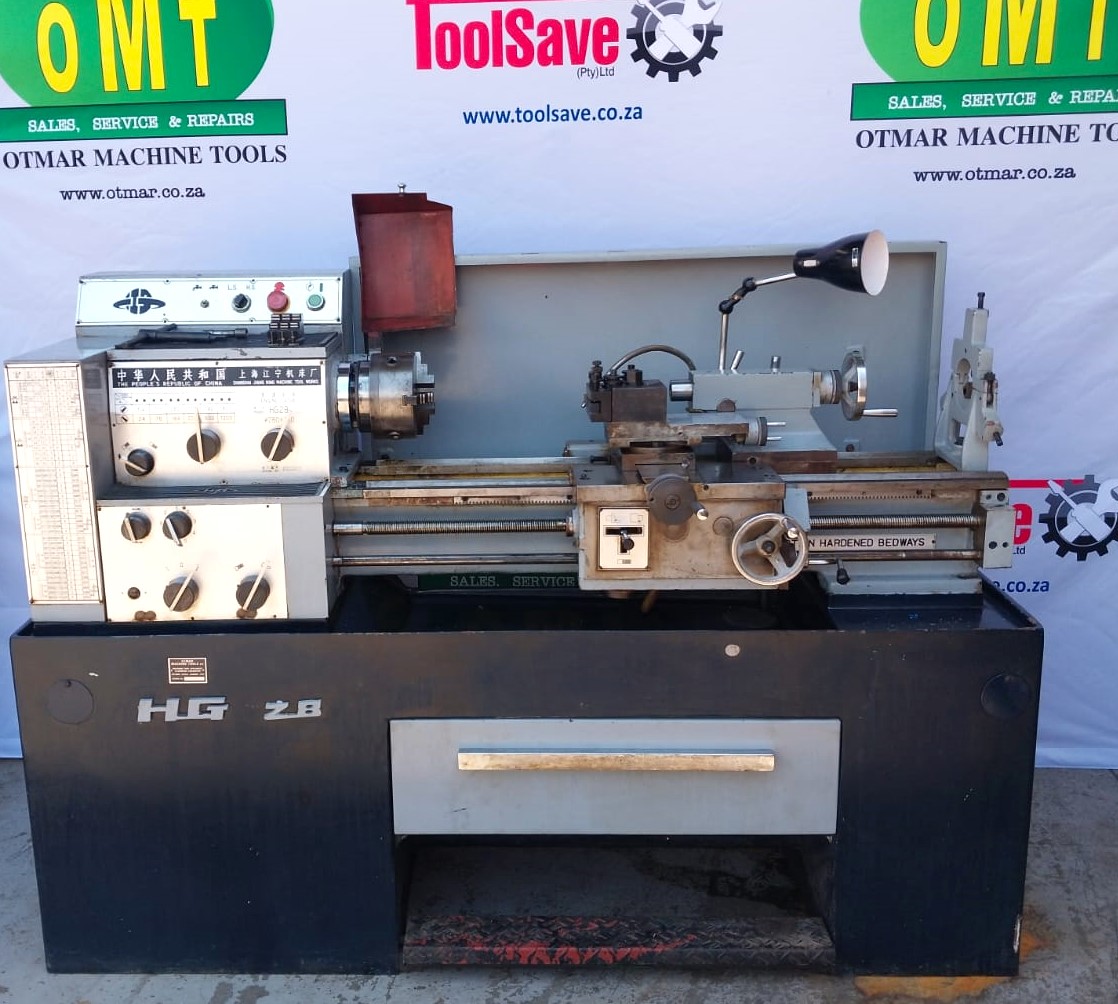Description
USED HG 28 LATHE
A lathe is a versatile machine tool used for shaping and machining materials, particularly metals and plastics, by rotating the workpiece against a cutting tool. It is one of the oldest and most fundamental machines in the field of manufacturing and metalworking. Lathes are commonly used in many industries for tasks such as turning, boring, drilling, and threading.
Types of Lathes:
- Engine Lathe: The most common type, used for a wide variety of tasks such as turning, drilling, and threading. It typically has a horizontal spindle and can handle both small and large workpieces.
- Turret Lathe: Equipped with a turret tool post that can hold multiple cutting tools, making it ideal for repetitive production runs. It allows for quick tool changes and can be more efficient than an engine lathe in certain applications.
- CNC Lathe (Computer Numerical Control): These lathes are automated and controlled by a computer. CNC lathes allow for high precision and complex operations, often used in mass production or for intricate designs.
- Bench Lathe: A small lathe designed for lighter work, often used for small, delicate parts or hobbyist applications.
- Vertical Lathe: In this type of lathe, the workpiece is mounted vertically, allowing for operations on larger or heavier workpieces that may not fit into a standard horizontal lathe.
- Special Purpose Lathes: These include lathes designed for specific applications, such as wood lathes (used for shaping wood), and capstan lathes (which are used for producing high volumes of small parts).
Basic Components of a Lathe:
- Bed: The base of the lathe, which supports all other components. It must be rigid and stable to ensure precision.
- Headstock: Contains the motor, spindle, and gears that drive the workpiece.
- Tailstock: Located opposite the headstock, it can be adjusted along the bed and holds the workpiece or a tool such as a drill bit.
- Carriage: A component that holds the tool and moves it across the workpiece in various directions.
- Tool Post: Holds the cutting tool in place.
- Chuck: A clamping device attached to the spindle to hold the workpiece firmly during machining.
Key Lathe Operations:
- Turning: The primary operation of a lathe, where the workpiece is rotated against a cutting tool to reduce its diameter.
- Facing: The process of cutting the end of the workpiece to create a flat surface.
- Drilling: A cutting tool (drill) is used to create holes in the workpiece.
- Threading: A tool is used to cut threads on the outside or inside of the workpiece.
- Boring: Enlarging an existing hole in a workpiece using a tool.
- Knurling: A process of creating a textured pattern on the workpiece, often used for gripping surfaces.
- Parting: Cutting off a section of the workpiece.
Applications of a Lathe:
- Manufacturing machine parts: Lathes are widely used in the production of machine parts such as shafts, spindles, and bushings.
- Automotive and Aerospace: For making precision components in engines, transmissions, and other machinery.
- Woodworking: Wood lathes are used to shape wooden objects like bowls, furniture legs, and spindles.
- Jewelry Making: Small lathes are used to make rings, bracelets, and other jewelry items.
- Prototype and Custom Work: Lathes are essential in creating prototypes or one-off custom pieces in engineering and design.
Lathe Safety Considerations:
- Always wear safety glasses and appropriate protective gear.
- Make sure the workpiece is securely clamped before starting the lathe.
- Keep hands and loose clothing away from rotating parts.
- Ensure proper lighting and a clean workspace to avoid accidents.
Conclusion:
The lathe is an essential and highly adaptable machine tool in the metalworking, woodworking, and manufacturing industries. Whether for high-volume production or precision tasks, lathes remain an indispensable part of machining operations.







